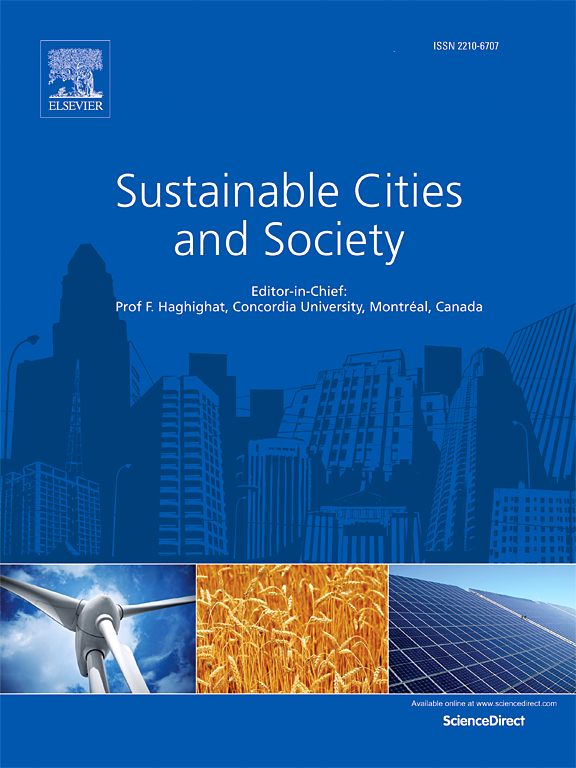A systematic review of multi-scale digital modelling in sustainable urban design and management
IF 10.5
1区 工程技术
Q1 CONSTRUCTION & BUILDING TECHNOLOGY
引用次数: 0
Abstract
Digital modelling has significantly advanced and is crucial in urban and building design. Numerous scholars have reviewed and summarized digital modelling research for buildings and cities. However, existing reviews lack a comparative analysis of the similarities and differences between urban and building modelling and a focus on practical applications across multiple scales. Multi-scale digital modelling (MSDM) refers to digital models encompassing varying geometric or semantic detail levels. This paper presents a quantitative analysis and systematic literature review (SLR) of MSDM for cities and buildings. The SLR identifies trending research themes as "Digital Building/Urban Design" and "Sustainable Building/Urban Management." Broader urban applications often require lower Levels of Detail (LoD1-2) for efficient analysis, whereas building management tasks demand higher LoD (LoD3-4). Urban resource management, with a particular emphasis on energy management, is a focal area where scholars investigate issues such as urban energy demand, consumption, and solar potential. The "reconstruction-amendment-calculation-update" process could support better integrating distributed energy systems, energy storage, and urban infrastructure. Furthermore, other urban resources, including water, land, infrastructure, and waste, can be sustainably managed by employing well-planned multi-level digital models. Effective urban and architectural design and strategic urban resource management will foster sustainable development for cities and society.

求助全文
约1分钟内获得全文
求助全文
来源期刊

Sustainable Cities and Society
Social Sciences-Geography, Planning and Development
CiteScore
22.00
自引率
13.70%
发文量
810
审稿时长
27 days
期刊介绍:
Sustainable Cities and Society (SCS) is an international journal that focuses on fundamental and applied research to promote environmentally sustainable and socially resilient cities. The journal welcomes cross-cutting, multi-disciplinary research in various areas, including:
1. Smart cities and resilient environments;
2. Alternative/clean energy sources, energy distribution, distributed energy generation, and energy demand reduction/management;
3. Monitoring and improving air quality in built environment and cities (e.g., healthy built environment and air quality management);
4. Energy efficient, low/zero carbon, and green buildings/communities;
5. Climate change mitigation and adaptation in urban environments;
6. Green infrastructure and BMPs;
7. Environmental Footprint accounting and management;
8. Urban agriculture and forestry;
9. ICT, smart grid and intelligent infrastructure;
10. Urban design/planning, regulations, legislation, certification, economics, and policy;
11. Social aspects, impacts and resiliency of cities;
12. Behavior monitoring, analysis and change within urban communities;
13. Health monitoring and improvement;
14. Nexus issues related to sustainable cities and societies;
15. Smart city governance;
16. Decision Support Systems for trade-off and uncertainty analysis for improved management of cities and society;
17. Big data, machine learning, and artificial intelligence applications and case studies;
18. Critical infrastructure protection, including security, privacy, forensics, and reliability issues of cyber-physical systems.
19. Water footprint reduction and urban water distribution, harvesting, treatment, reuse and management;
20. Waste reduction and recycling;
21. Wastewater collection, treatment and recycling;
22. Smart, clean and healthy transportation systems and infrastructure;
 求助内容:
求助内容: 应助结果提醒方式:
应助结果提醒方式:


